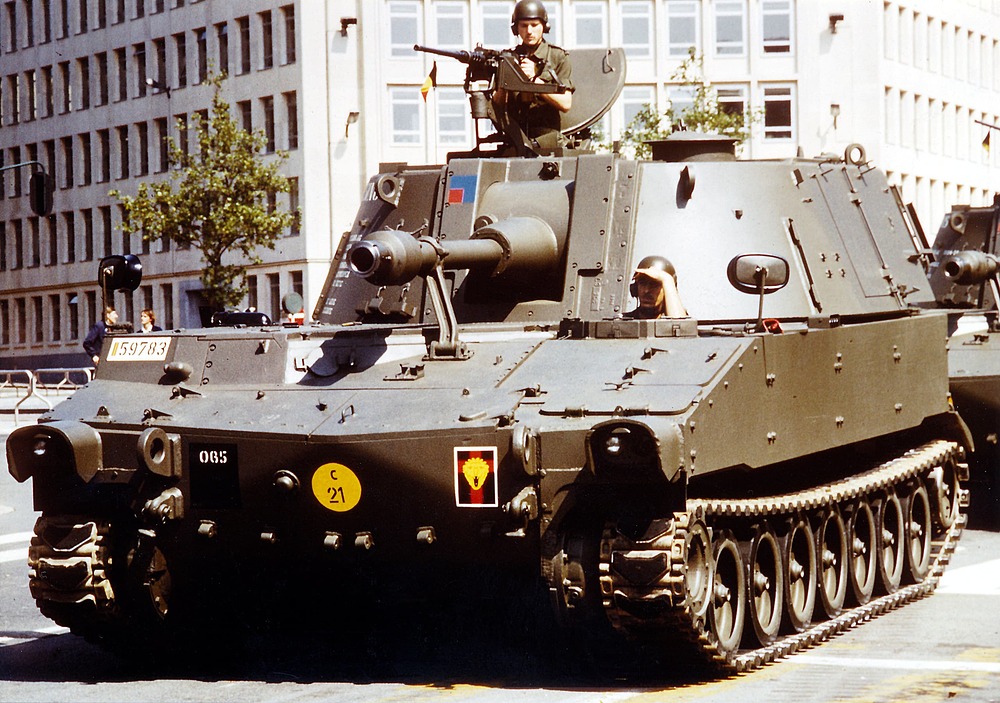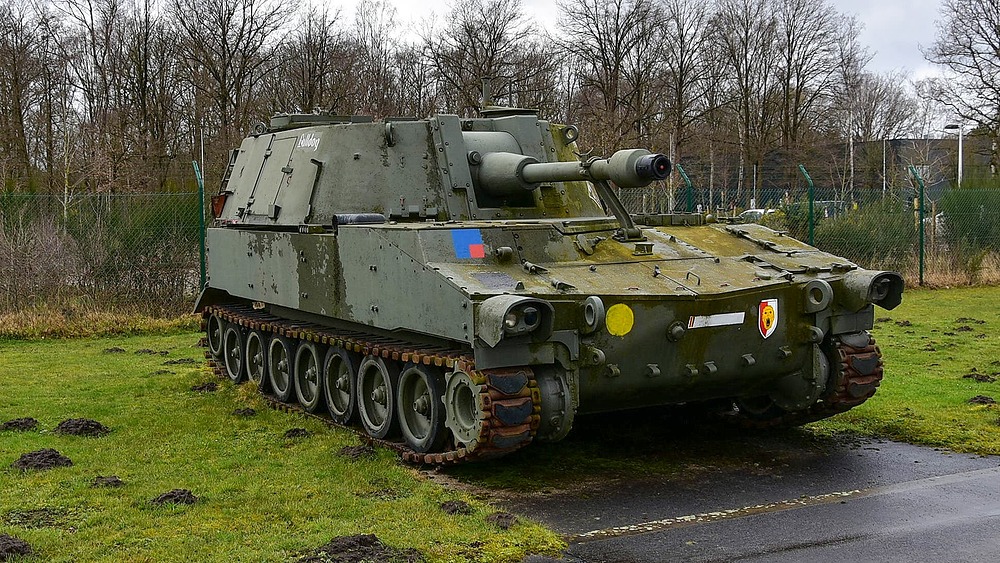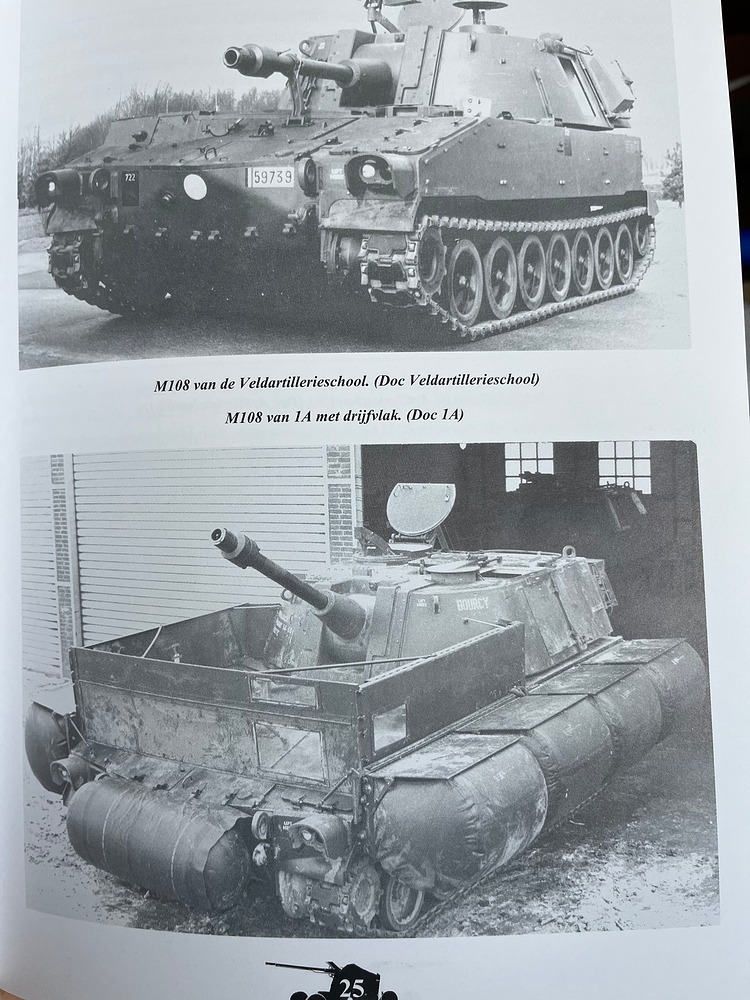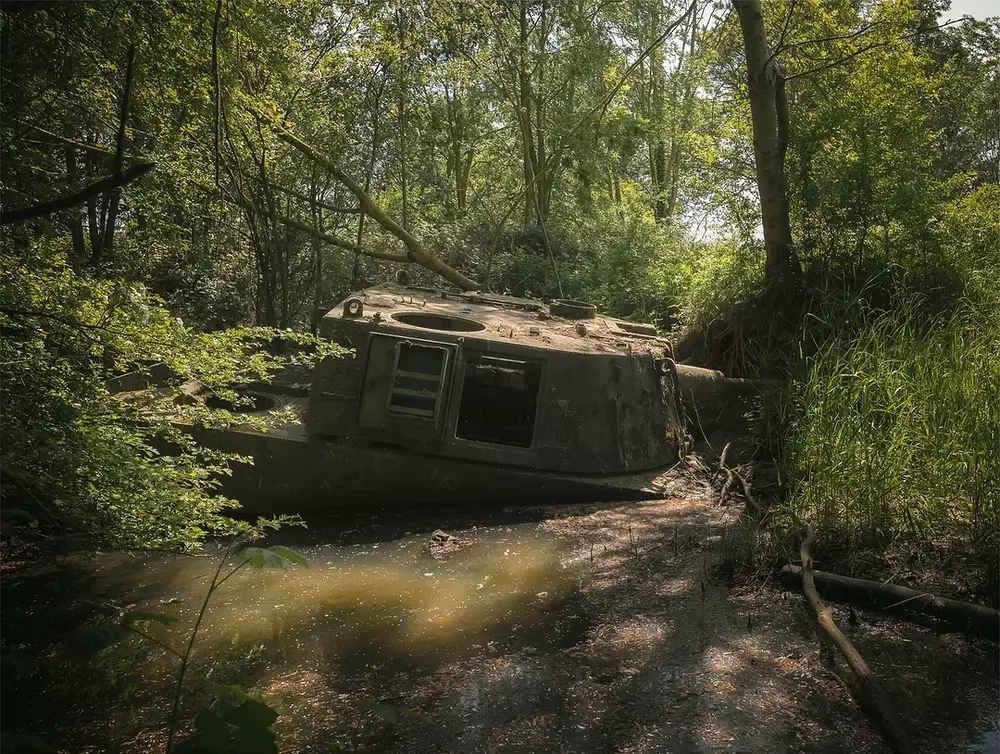- Yes
- No
- (independent) BeNeLux tree
- France: BeNeLux subtree
- Belgian (sub) tree
- other
- I voted ‘no’ in the previous poll
Hello all, today I’d like to suggest a rare Cold War vehicle used by Belgium: the M108 105 mm self-propelled howitzer.
TL;DR: A light NATO SPH with a 105 mm gun, aluminum armor, with a short American career, but Belgium fielded almost 100 of them and used them extensively before converting many into command vehicles.
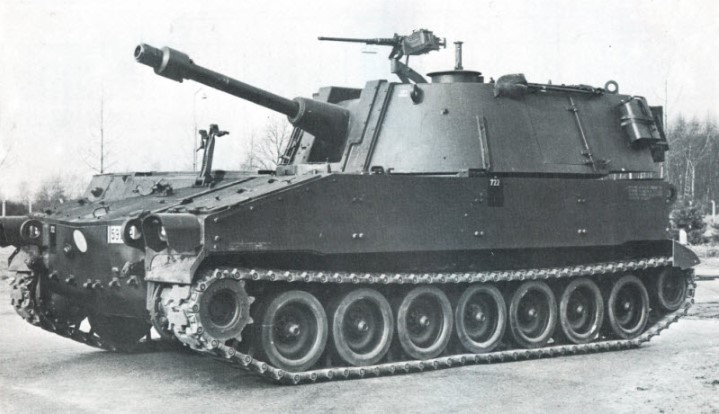
History
History
U.S. Development
The M108 was developed under the T195 project in the 1950s. It was first designed for a 110 mm gun, but NATO standardization quickly steered the project toward the 105 mm caliber to take advantage of existing ammunition stockpiles. By 1958 the first prototypes were completed, and after improvements to the suspension and a switch to the diesel Detroit Diesel 8V-71T engine, the T195E1 prototype was standardized as the M108 in 1961.
Production began in 1962, but it was short-lived. The U.S. Army soon determined that a heavier weapon was preferable, leading to the M109 155 mm replacing it. By 1963, fewer than 400 M108s had been produced.
Belgian Acquisition
While the U.S. retired the M108 quickly, Belgium became its largest foreign operator. In 1964, Belgium ordered 96 M108 howitzers from the United States, and deliveries were completed in 1966. This gave Belgium a modern, armored artillery platform that could keep up with its new Leopard 1 tanks and M113 APCs within its NATO formations in West Germany.
Recipient Supplier Designation Description Weapon Category Order Year Number Ordered Delivery Years Belgium USA M-108 105mm Self-propelled gun Artillery 1964 96 1966 Service in Belgium
The Belgian Army deployed its M108s in armored artillery battalions within NATO’s Central Army Group (CENTAG). They provided mobile fire support for Belgian brigades stationed in West Germany. Crews valued their mobility, high rate of fire, and commonality of parts with the M113.
However, the shorter range and smaller shell of the 105 mm howitzer quickly became a handicap compared to the 155 mm M109. While U.S. and German forces shifted entirely to 155 mm systems, Belgium continued to operate the M108s into the 1970s and early 1980s.
By the 1980s, Belgium began phasing them out. Many hulls were rebuilt into VBCL command vehicles, with the gun removed and the turret repurposed for communications equipment. Some of these conversions were later exported, including to Chile.
Belgium, Spain, and Brazil remained the only notable users of the M108 after U.S. retirement. Today, preserved Belgian M108s can be seen at the Royal Museum of the Armed Forces (Brussels) and the Gunfire Museum (Brasschaat).
Design & Characteristics
Design
Crew
- 5 (Commander, gunner, driver, 2 loaders)
Armament
Main: 105 mm M103 howitzer (M139 mount)
- 87 rounds carried
- Fire rate: 3 rpm (burst) / 1 rpm (sustained)
- Range: ~11.5 km (15 km with RAP)
Secondary: 12.7 mm M2HB MG (commander’s cupola)
Protection
- Welded aluminum armor (protection vs. small arms and fragments)
- Optional NBC system (rare in Belgian service)
- Optional flotation kit (bow + side pontoons)
Mobility
- Engine: Detroit Diesel 8V-71T (405 hp)
- Speed: 55 km/h
- Range: 350 km
- Suspension: torsion bar, 7 road wheels/side
Dimensions & Weight
- Weight (combat): ~20.9–22.4 t
- Length: 6.11 m
- Width: 3.15 m
- Height: 3.06 m
Specifications
Category Details Crew 5 Weight 20.9–22.4 t Dimensions L 6.11 m × W 3.15 m × H 3.06 m Main Armament 105 mm M103 howitzer (87 rounds) Secondary Armament 12.7 mm M2HB MG Engine Detroit Diesel 8V-71T, 405 hp Speed 55 km/h Range 350 km Armor Aluminum (splinter protection only)
Place in War Thunder
The M108 would provide a mid-tier NATO SPH with mobility and a rapid-firing gun, but very light armor and limited destructive power compared to larger calibers. of the M109.
Strengths:
- Good mobility (shares drivetrain with M113 family)
- Rapid-firing 105 mm with HE, HEAT, smoke
- Historically significant for Belgium (largest user after the U.S.)
Weaknesses:
- Thin aluminum armor
- Shorter range and less destructive than 155 mm systems
Placement options:
- BeNeLux tree: best fit for Belgium
- France (BeNeLux subtree): if integrated under French tree
- Belgian subtree/premium: possible as an event or squadron vehicle
Pictures
Sources
Sources
- Hunnicutt, R. P. (1999). Sheridan: A history of the American light tank, Vol. 2. Presidio Press.
- Foss, C. F. (1983). Jane’s Armour and Artillery 1983–84. Jane’s Publishing.
- Dunstan, S. (1980). Self-propelled howitzers. Blandford Press.
- Spielberger, W. J. (1990). Panzerhaubitzen und gepanzerte Artillerie. Motorbuch Verlag.
- U.S. Army Ordnance Dept. (1962). Technical description of the 105mm self-propelled howitzer M108 (T195E1).
- SIPRI Arms Transfers Database. (n.d.). Belgium: M108 order (1964–1966). https://www.sipri.org/databases/armstransfers
- Belgian Army archives and museum collections (Brussels RMA, Brasschaat Gunfire).

